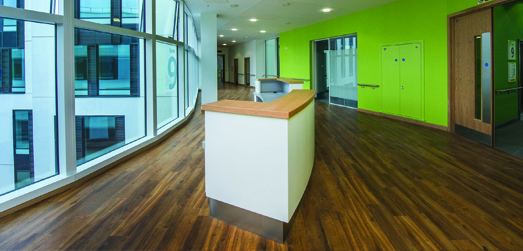When gypsum was banned from landfill in 2009, an alternative solution had to be found. A partial exemption allowing gypsum to make up 10 per cent of waste to landfill has now been closed off. Single cell non-hazardous landfill is still possible, but there are few sites open. Even then, red tape makes this far more expensive and, according to the Environment Agency, this route is rarely used for gypsum and plasterboard waste. So, what is happening? Steve Menary reports.
Recycling was supposed to be the future; it was one of three main targets in the Ashdown Agreement, along with reducing manufacturers’ waste and working with the supply chain. Ambitious targets were set. The UK Contractors Group has committed to reduce plasterboard wastage to 5 per cent by 2020, and the Plasterboard Sustainability Partnership is looking for an agreement to adopt the same objective.
Successes
Individually, there have been notable achievements that demonstrate how successful recycling can be. On the £430 million Southmead Hospital project, main contractor Carillion specified Rockfon ceilings for specialist Carlton Ceilings & Partitions to install. This collaboration, which also involved SIG, won the Best Practice Eco Innovation award at the 2014 AIS FPDC industry awards. All site waste, ranging from Rockwool’s insulation slabs and pipe lagging to ceiling tiles, was transported by SIG in waste bags to the Rockwool factory in Wales for upcycling into new Rockwool insulation products.
Manufacturers remain the main legal outlet, as recycling gypsum into agricultural usage has gone down the mono-cell route and become too time-consuming and costly after a 2012/13 review by the Environment Agency led to a system of permits. Mark Hatfield, chair of the Gypsum Re-processors Association UK & Ireland, said: “Landfill is practically impossible; it’s no longer feasible. The cement industry used to take quite a bit, but for technical reasons, no longer does, so there’s quite a lot of pressure on the plasterboard manufacturers.”
Manufacturers all operate waste-return schemes running on back-loads. The Gypsum Products Development Association (GPDA) monitors waste management. Figures for 2014 are not available yet, but in 2013 waste recycled from new construction exceeded 50 per cent, which meets a target set by the Ashdown Agreement. Plasterboard waste from new construction is covered by these waste-return schemes, which are typically managed by specialist contractors, distributors and manufacturers, but viability remains an issue in an increasingly regulated market.
GPDA general secretary Crispin Dunn-Meynell commented: “The manufacturers can take back new construction waste, but this is often not economic from small sites or where there is not a plant in the local area. The key issue for recycling is to have a viable market for the recycled gypsum.”
If recycling to manufacturers is not practicable for contractors on smaller jobs, landfill and agricultural use too costly and the cement route dying out, then options are limited. “The outlets for recycled plasterboard are much less than the market for recycling waste. There is a constant hive of people looking for an outlet,” added Mr Hatfield.
This is leading to a flourishing illegal route. Heidi Barnard is British Gypsum’s sustainability leader and she echoes the GPDA’s concerns. “One of the biggest issues for the industry is if sending to an illegal route, of which there are many, is cheaper then we can’t compete with the illegal routes.” Another problem is how gypsum from work is recycled. Here, disposal is typically monitored by the main contractors.
Auditing
Steve Cook, principal sustainable development manager at Willmott Dixon’s Re-Thinking operation, said: “When we are working with a strip-out contractor, the strip-out waste is managed by the strip-out contractor. So we do an audit as we like to know who they are and what they are doing with the waste.”
Not all contractors are so diligent, and this is also fuelling the increasingly buoyant illegal market for gypsum disposal. But what could change this situation is the shift by big power stations from coal-fired generation to alternative means of producing power. Coal-fired power stations produce a by-product known as De-sulphur Gypsum (DSG), which is a major component of recycled plasterboard. “You only have to look at the amount of pink plasterboard on sites to see that,” reflected Mr Hatfield.
British Gypsum has been recycling waste since 2000 and about 93 per cent of the contents of BG’s gypsum is now from recycled sources. Of that 93 per cent, around 80 per cent is DSG. The remaining 13 per cent comes from specialist and main contractors, paper, which is used in plasterboard, and also waste from British Gypsum’s own manufacturing process.
However, DSG is expected to become scarcer as coal-fired power stations such as Drax shift to generating power through biomass. As a result, there will be far less DSG available. Mr Hatfield concluded: “Right now, we are at a stalemat
So, unless action against illegal disposal of gypsum waste is clamped down before then to stimulate the legal market, then nothing will change.


